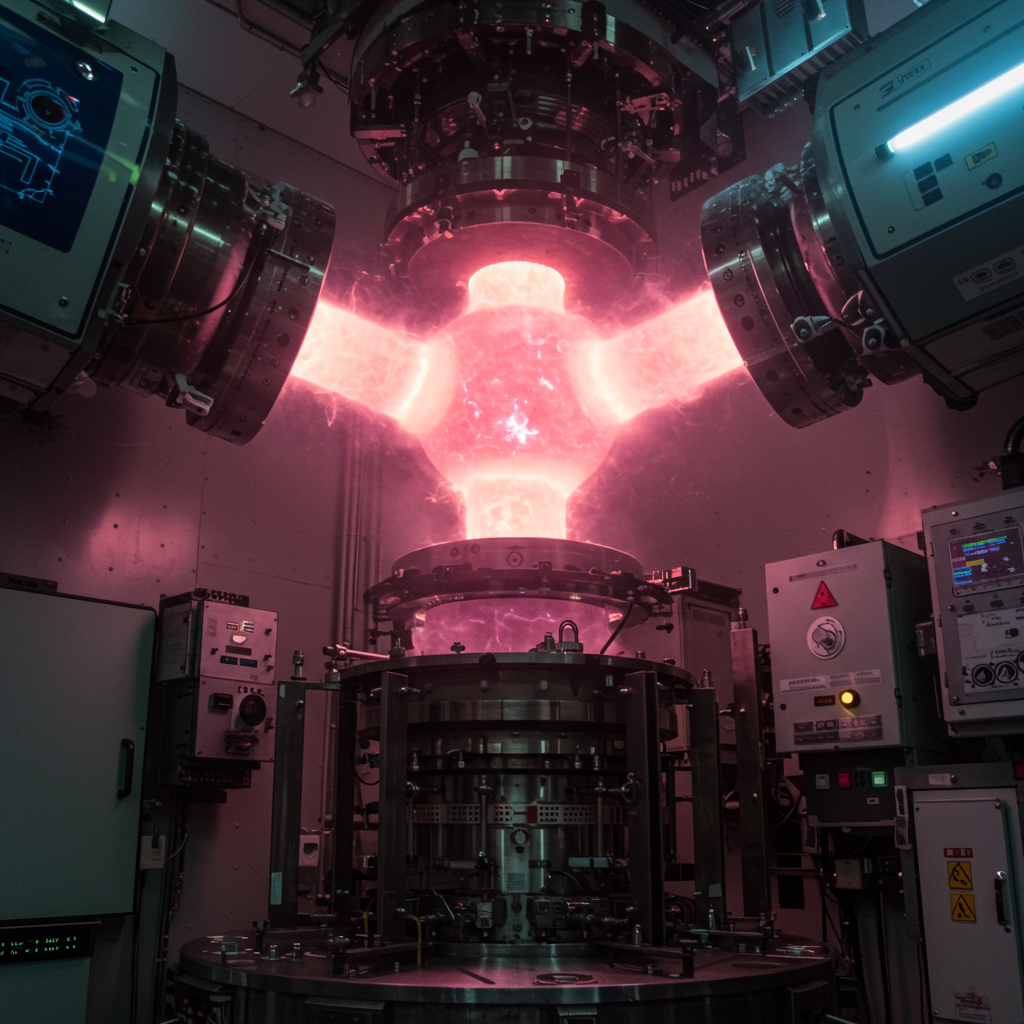The long-sought dream of unlimited, clean energy powered by controlled nuclear fusion seems to be moving closer to reality. Recent breakthroughs in research facilities around the world, from record-setting plasma containment times to successful ignition experiments and rapid private sector innovation, suggest the scientific and engineering hurdles are becoming less insurmountable. The quest to harness the power that fuels stars could fundamentally change our energy future.
For decades, scientists have joked that controlled nuclear fusion is always 30 years away. While significant challenges remain, recent advancements indicate that timeline may finally be shortening, perhaps down to 15 or 20 years according to some experts. The increasing investment and ambitious timelines from private companies are also injecting new urgency and diverse approaches into the field.
Magnetic Confinement Pushes Boundaries
Most fusion research focuses on magnetic confinement, using powerful magnetic fields to contain superheated gas, known as plasma. This plasma must reach temperatures many times hotter than the sun’s core for fusion reactions to occur. The main goal is to hold this incredibly energetic plasma stable and dense enough for long periods.
Two primary magnetic confinement designs dominate the field: tokamaks and stellarators. Tokamaks, originating in the Soviet Union, use a powerful electric current induced in the plasma itself, combined with external coils, to create a magnetic “doughnut.” Stellarators use complex, twisted external coils alone to shape the magnetic field, aiming for inherent plasma stability without relying on the plasma current.
Record Durations Achieved in Key Experiments
Exciting news recently emerged from two prominent magnetic confinement experiments. Germany’s Wendelstein 7-X, an advanced stellarator, set a new record for its device by successfully containing plasma for an impressive 43 seconds last May. This duration was a significant improvement for the Wendelstein project.
Not to be outdone, the Joint European Torus (JET) facility in the UK, a large tokamak, achieved even longer containment times. In its final experiments before retirement in December 2023, JET reportedly held plasma for up to 60 seconds. While these JET results are still awaiting formal publication, a press release from Germany’s Max Planck Institute for Plasma Physics positioned both the Wendelstein and JET reactors as “joint leaders” in demonstrating continuous high-temperature fusion operation. The release also pointed out JET’s plasma volume was three times larger, subtly highlighting the Wendelstein’s achievement with a smaller plasma.
This friendly competition between Wendelstein’s stellarator and JET’s tokamak underscores the ongoing debate about which design path is superior for long-term, stable operation. Stellarators are theoretically more stable over time because they don’t rely on maintaining an internal plasma current, which can be prone to disruptions. However, their complex magnet designs are more challenging to engineer. Wendelstein researchers aim to push their containment times past a minute and eventually towards half an hour or more, venturing into previously unexplored operational territory.
Expert analysis suggests that superconducting magnets are proving vital to these breakthroughs. Cooled to near absolute zero, these magnets generate far more powerful magnetic fields than conventional magnets, providing unprecedented control over the turbulent superheated plasma. Some experts believe the future of fusion reactors might involve a hybrid design combining the stability benefits of stellarators with the relative simplicity of tokamaks, though the science is still too early to determine the best approach.
Inertial Confinement Makes a Historic Mark
Beyond magnetic fields, another approach uses brute force: inertial confinement. This method blasts a small fuel pellet with incredibly powerful lasers or other drivers, compressing it so rapidly that fusion occurs before the pellet blows apart due to the energy released.
The most significant recent achievement in this area came in 2022 at the National Ignition Facility (NIF) in the United States. Using the world’s most powerful laser system, NIF successfully triggered “fusion ignition.” This milestone meant the energy produced by the fusion reaction within the fuel pellet exceeded the energy delivered to the pellet by the lasers. It was the first time humans created a controlled, self-sustaining burning fusion reaction in a lab setting – likened to lighting a match that turns into a bonfire rather than fizzling out.
While a monumental scientific breakthrough, the NIF approach currently faces significant engineering challenges for power generation. The giant lasers require many hours to charge and consume vast amounts of energy – roughly 100 times more than the energy released from the fusion reaction in the pellet itself during early experiments. A commercial power plant would need to ignite fuel pellets non-stop, perhaps 10 times every second, requiring immense efficiency and rapid-fire capability not yet demonstrated.
Despite these hurdles, the fact that NIF proved net energy gain from the fusion reaction itself is critical. Several startup companies are now pursuing inertial fusion energy, proposing ways to make the driver system more efficient and the pellet injection rapid enough for continuous power.
The Accelerating Pace of Private Fusion Innovation
The landscape of fusion research is rapidly changing with a significant surge in private sector investment. Experts note that private companies are now often outspending governments in this “hard tech” area and appear more willing to take on higher risks, potentially accelerating progress.
Several private firms are developing innovative fusion concepts:
General Fusion (Canada): This company is pursuing Magnetized Target Fusion (MTF). Their unique method involves compressing a spherical plasma contained within a liquid metal liner using an array of high-powered pistons. Recent experiments validated their approach by setting a world record for neutron generation using MTF, producing 600 million neutrons per second, verified by the IAEA. These Plasma Compression Science experiments achieved a 190-fold increase in plasma density, significantly extended plasma confinement time relative to compression, and boosted magnetic field strength more than thirteenfold. General Fusion’s approach aims for pulsed operation rather than continuous, which they believe is simpler and avoids the need for massive, expensive superconducting magnets or high-power lasers. They are now preparing for their larger LM26 prototype, targeting grid power delivery by the early to mid-2030s.
Commonwealth Fusion Systems (US/MIT): This spin-off is developing a compact, high-field tokamak design called ARC, utilizing advanced superconducting magnets. They plan to build a plant in Virginia, aiming to produce significant electricity (up to 400 megawatts) by the early 2030s.
- Tokamak Energy (UK): This company focuses on spherical tokamaks, a more compact variation of the standard tokamak. Their ST40 device holds a record from 2022 for achieving the 100 million degrees Celsius plasma temperature considered necessary for commercial fusion. Tokamak Energy recently acquired a powerful 1-megawatt gyrotron, a device that generates microwave radiation crucial for heating plasma and driving current. Gyrotrons are particularly beneficial for spherical tokamaks as they help overcome the limited space for a central magnetic coil. Tokamak Energy aims for commercial fusion by 2030.
- www.scientificamerican.com
- glassalmanac.com
- www.thecooldown.com
- tech.yahoo.com
- glassalmanac.com
These diverse private ventures, exploring different technological paths, underscore the growing confidence and investment in the potential of fusion energy within the next decade or two.
Enabling Technologies and Future Challenges
The progress in magnetic confinement is significantly aided by advancements in superconducting magnet technology. These magnets, cooled to extremely low temperatures, can create magnetic fields orders of magnitude stronger than conventional ones. This enhanced field strength is critical for better containing and controlling the superhot, turbulent plasma required for fusion.
Devices like gyrotrons are also playing a crucial role, particularly in heating and sustaining the plasma. Their ability to deliver precise microwave energy helps achieve and maintain the extreme temperatures needed for fusion reactions. For designs like spherical tokamaks, gyrotrons offer the added benefit of helping to initiate and drive the plasma current without requiring an impractically large central magnet.
Despite the excitement, experts caution that both magnetic and inertial confinement approaches still face substantial engineering challenges. Scaling lab demonstrations to power plant size, developing materials that can withstand intense neutron bombardment, and ensuring continuous, reliable operation are complex hurdles that will require years of further experimentation and development.
Nevertheless, the recent record-breaking achievements in plasma containment, the historic demonstration of fusion ignition, and the accelerating innovation driven by the private sector collectively signal a tangible shift. While commercial fusion power isn’t here yet, these milestones suggest that the once seemingly distant future of clean, abundant energy from nuclear fusion is indeed drawing nearer.
Frequently Asked Questions
What are the main methods scientists are using to achieve nuclear fusion?
Scientists are primarily pursuing two main approaches for controlled nuclear fusion: magnetic confinement and inertial confinement. Magnetic confinement uses powerful magnetic fields generated by external coils or internal plasma currents to hold superheated plasma in place. Inertial confinement uses high-intensity lasers or other energy sources to rapidly compress a small fuel pellet, causing fusion before it disbands.
Which companies are notable players in the private nuclear fusion race?
Several private companies are making significant strides in fusion technology. General Fusion in Canada is developing a Magnetized Target Fusion approach using liquid metal compression. Commonwealth Fusion Systems in the US is working on compact tokamaks with high-temperature superconducting magnets. Tokamak Energy in the UK is developing spherical tokamaks and integrating new heating technologies like gyrotrons. These companies aim to deliver grid power within the next 10-15 years.
When could nuclear fusion power realistically become available for energy grids?
While the traditional joke is that fusion is always 30 years away, recent breakthroughs suggest the timeline is accelerating. Some experts now predict commercial fusion power might be 15-20 years away. Several private companies, like General Fusion, Commonwealth Fusion Systems, and Tokamak Energy, have set ambitious targets aiming to deliver power to the grid as early as the early to mid-2030s. However, significant engineering challenges still need to be overcome for sustained, grid-scale power generation.




